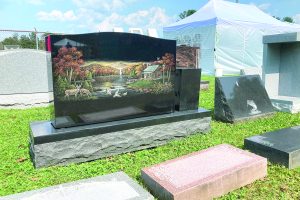Whether you’re camping or just taking a walk in the neighborhood you should be on the lookout for poison ivy. But if you know how to identify it and avoid it- you can keep the itching away!
Poison ivy is not new to most households, and you would think that a classic case of this common plant would be a rather quick diagnosis but not always the case. While many kids, and some adults, have a hard time recognizing their reaction to poison ivy (besides itching, of course), the plant itself is equally mysterious. One reason is that this unwelcome weed turns all sorts of beautiful colors all year long – shades of green, red, yellow and orange. These plants can also grow anywhere – from backyards and flower beds to the school yard and along walking trails.
So how do you identify the plant?
Check out some photos of poison ivy plants and you have a better chance of picking it out of a landscape lineup. Look for a small plant with three leaflets. The leaflets are shiny and have a tint of red to them. An easy way to remember this is, “leaves of 3, let it be.”
If you do see effects from the unwelcomed weed, like rhus dermatitis, (a.k.a. the rash), DON’T PANIC! It’s your body’s reaction to the oil on the leaves, stem or roots. You may have also been exposed to poison sumac, or poison oak, both related and equally as irritating!
A poison ivy attack can start slowly, and sometimes the rash does not appear until a week after exposure. This makes mom’s diagnosis even more confusing. Sometimes a full-blown rash can develop quickly, while other times only a small area of the body is affected. First signs of a rash may look like a bug bite or a scratch. Once it spreads, itchy red bumps or blisters appear on the skin, often in the shape of a straight line.
Stop the itching . . . and hurry! Stop scratching for starters, or the symptoms may worsen. IN FACT, the rash may stay around for weeks without treatment. This can depend on how much oil is on the affected area and how badly you were exposed.
There are many natural home remedies to help sooth itchiness and prevent the rash from worsening. Take an oatmeal bath, use some anti-itch gel, or smear on some Calamine lotion or strongly brewed tea. A cold compress will also help prevent the rash from spreading. If these remedies don’t give you the results you need, SEE A DOCTOR.
Getting rid of the stuff is another story – you can hire a landscaper to do a walk-through of your yard and remove the plants. You can also spray the plants manually or remove them by the root. Make sure you wear gloves and cover up your body as much as possible – remember, it’s not a fashion show.
At camp it will be a little more difficult to control with the woods and all of the brush. The less brush, the better. You can make sure you play around clear and less-wooded areas. And now that you know what you are looking for, you can make sure to steer clear of the stuff and alert the counselors when you see the plant so they can have it removed.
Exposure to leaves, stems or roots of a plant are dangerous, so if you’re lucky enough to see it before it’s too late, don’t touch it! And never burn the plant because it can also trigger a reaction to anyone who is exposed to the smoke. Trust us.
(courtesy Philadelphia YMCA)



























Add Comment